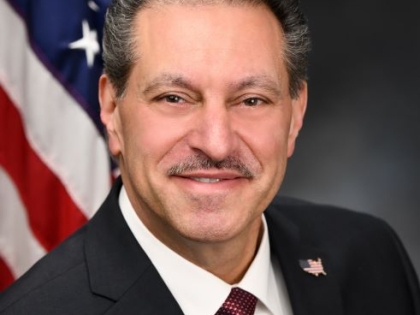
Bill co-sponsored by Addabbo to create statewide household paint stewardship program approved by Environmental Conservation Committee
Senator Joseph P. Addabbo, Jr.
January 9, 2018
NYS Senator Joseph P. Addabbo, Jr. recently joined with his Senate Environmental Conservation Committee colleagues in approving legislation (S.881) he-cosponsors that would establish a greatly needed statewide paint stewardship program to give New Yorkers greater opportunities to safely and conveniently dispose of old cans of paint. The next step for the bill would be a vote by the full Senate.
“Constituents who participate in my twice-yearly community recycling events often mention how hard it is to safely dispose of old paint and other household hazardous waste,” said Addabbo, noting that his Spring recycling fair is tentatively scheduled for Sunday, April 29th. “This program would go a long way towards solving this stubborn problem: helping to protect our environment, saving municipalities money, and making it easier for all of us to feel good about cleaning out our basements and garages of old paint without posing a threat to our waterways and other natural resources.”
Under the proposal, paint manufacturers would be required to either set up a paint stewardship program of their own to accept leftover household paint from consumers, or form a non-profit organization of producers to launch an initiative for the collection, transportation, reuse, recycling, and/or possible burning for energy of old paint by appropriately licensed facilities. All aspects of the stewardship program must be conducted using environmentally sound management practices to ensure safe disposal and handling of the paint, which would cover containers holding up to five gallons. Post-consumer paint collection sites would be conveniently located in cities and throughout the state to make it easy for people to participate.
“By some accounts, about 3.1 million gallons of paint go unused in New York State every year, and the United States Environmental Protection Agency (EPA) estimates that about 10 percent of household paint nationwide becomes waste,” said Addabbo. “Tossing old paint into the garbage or washing it down the sink or sewer system is a threat to our environment, which we can minimize with an effective safe disposal program.”
Addabbo noted that the responsibility for collecting and disposing of unused paint now largely falls upon local government household hazardous waste programs, and that paint is the single largest waste stream managed by these collection services. “If this legislation is signed into law, it could potentially save local governments in New York about $25 million annually,” he said.
Addabbo pointed out that the legislation, which passed the Senate but not the Assembly in 2017, is supported by the City of New York since 60-65 percent of material accepted from the public at annual SAFE disposal events is paint. In addition, paint makes up 75 percent of the waste accepted at Department of Sanitation special waste sites.
Eight other states, as well as Washington, D.C., have already instituted similar programs, where 80 percent of the latex paint recycled is used to make new paint. “As is the case with other states, the proposed New York legislation would allow for a small increase in the price of paint sold to help support the implementation and operation of the stewardship program,” Addabbo said. Generally, the assessments in other states are approximately 35 cents for under a gallon of paint, 75 cents for a gallon, and about $1.60 for containers above a gallon up to five gallons.
“I hope the State Assembly pursues this consumer-friendly and environmentally-wise legislation this year and that we can finally get an effective paint collection program on the books in New York State,” said Addabbo. “We all want to do the right thing in terms of protecting our environment, and we should make it as easy as possible for all people to do so.”


